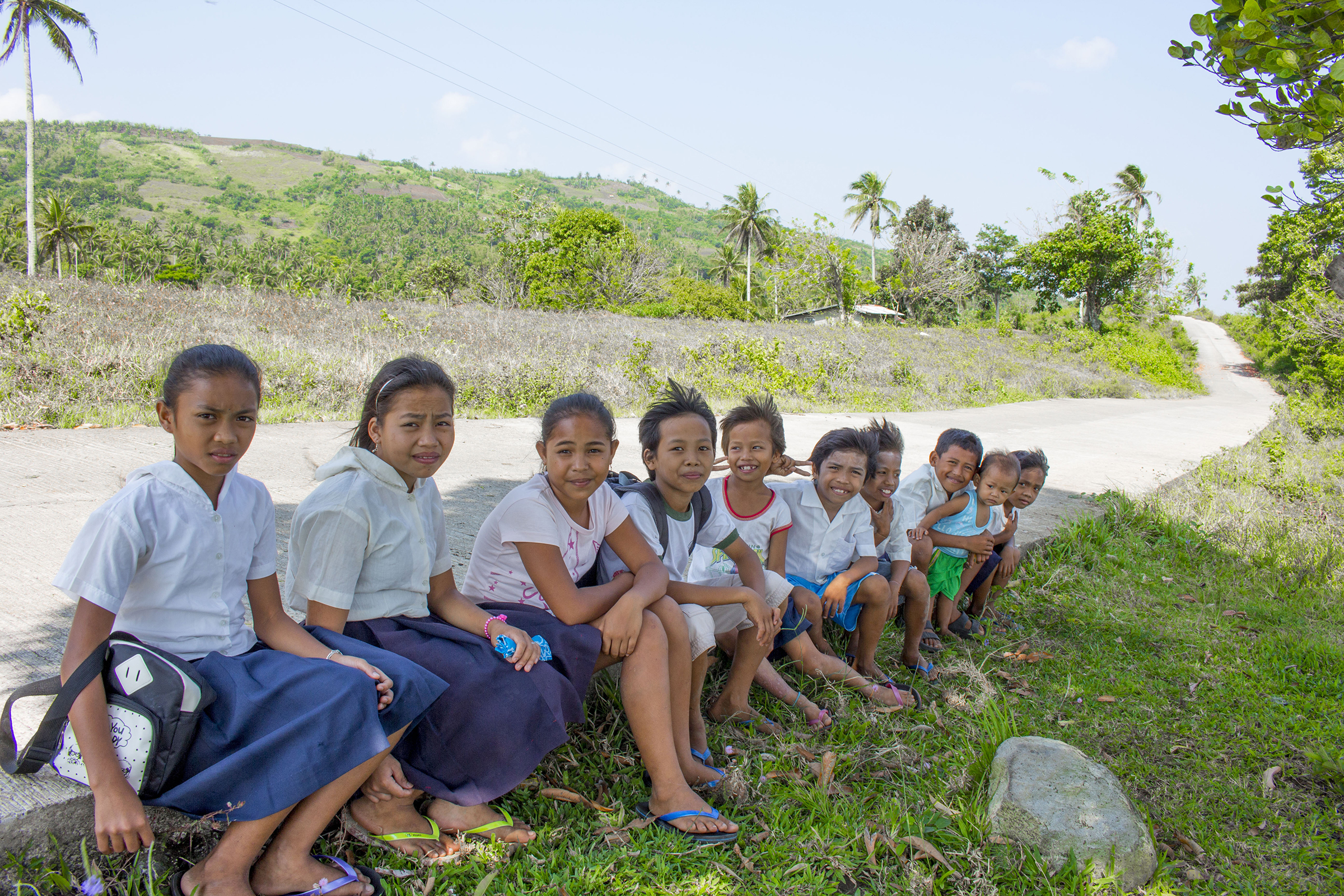
Jennifer Cron, 32, recalled how her father lamented about their rugged path: “Masemento gayud yan, gadan na ako (I’ll be dead if [road] is cemented).”
She tearfully recounted how she spewed her banter in response to her father’s whine and said, “Patitinampo ko yan. Hilingon mo, tay (I will construct the road, You’ll see).”
She would like to take her crippled father for a ride in a motorcycle on a cemented road but even a glance of this was impossible now.
Her father’s wish was too evasive to be true. The road from Sitio Banaw of Brgy. Caranday going to the village’s Poblacion was only concreted in 2014 four years after her father died.
The poor village of Caranday
The agricultural town of Baao is one of the poor municipalities in Camarines Sur with a poverty incidence of 37.35 where 3,380 of its 5,729 households are identified poor in 2011 by DSWD’s information management system called Listahanan.
Brgy. Caranday is one of its 30 poor villages where 165 out of its 179 households live below the poverty threshold because most of its residents do not have permanent source of income and could hardly send their children to college.
Its villagers resort to farming in this upland area of Baao but their crops are spoiled when they haul these because of their uneven clay dirt path. Thus, their products such as coconuts, corns, squashes, string beans and bananas are sold at lower prices.
The Agta’s plight in Sitio Banaw
Jennifer of Sitio Banaw in Brgy. Caranday is part of its 69 households belonging to Agta Tagbangon-Simaron whose ancestors inhabited these remote mountains of Baao for the longest time.
She learned how to farm and raise livestock with her husband to support their four (4) children. They hardly earn PhP2,000 every month with a diminutive pay from tandan, working for a landlord’s farm.
Caranday is a refuge for food and shelter for the Agtas but their seclusion from the rest of the villagers effected difficult access to education, health and socio-economic activities.
Just like her father, Jennifer would like to get a decent road from Sitio Banaw to Caranday’s Pobalcion where the road to town is accessible. She traversed either a muddy or dusty path and hurdled big rocks for a grueling 20-minute walk in this steep and winding dirt path.
It was also difficult for the sick people to get medical aid and students from Banaw who go to Poblacion.
“Dipisil talaga. Malumpat ka sa kagagapuan, eh, kung may alas pa (It’s really hard. You cross over rocks. What if there are snakes?),” she added.
The hope of dead IP’s daughter
In 2012, hope sparked when she heard about the possibility of getting a road from Kapit-Bisig Laban sa Kahirapan-Comprehensive and integrated Delivery of Social Services (Kalahi-CIDSS), a DSWD program that seeks to help alleviate poverty through community-driven development (CDD).
She was quick to attend meetings about this even if it takes a 30 minute-walk from their house to the venue. Others would even mock Jennifer’s indulgence explaining that she would get nothing from another empty promise but her determination dispelled protests.
“Magdisidir kita. Sige sige sana. Ipakita ta na kita desidido tanganing magkatinampo kita (We should be earnest. Don’t stop. Show them that we are serious to get the roads concreted,” she responded to the detractors.
Caranday villagers collaborated with the Agta’s to get their 1.19 km road paved in 2014.
As part of Kalahi-CIDSS process, residents were elected as volunteers to directly manage, implement and construct their road. Jennifer became one of the volunteers and was chosen by the majority as the chairman of the Bids and Awards and Committee (BAC) who determines eligible suppliers of goods, materials, equipment and equipment rental for the construction.
“Sa sarong project, hindi pwede bumili ng basang (In this project, we should not purchase indecisively),” she explained.
Though a High School graduate, she did not confine herself in the premise of her duties as the BAC chairman. According to Judith Cron, her relative, Jennifer was very participative and active to pursue their road.
“Nagpa-apod kami ning rabos ta kami man lang makikinabang kaini (We called for the community’s collaborative effort because we are the ones who will benefit from this),” Jennifer said.
She even asked her husband to help in the construction without pay for two days. She also became a laborer, who was unaware that she was five months pregnant that time.
“Gusto kong makatabang pa ako sa iba (I would like to help others),” she said.
Judith also a volunteer, agreed to Jennifer that they will leave a legacy to the next generations. Their children will honor them because the convenience was the result of their parents’ sacrifices.
“Proud sila na ining tinampo natapos dahil sa kontribusyo ng magulang nila (They are proud because the road was completed because of their parents’ contribution),” Jennifer said.
The road amounting to PhP2,605,811.00 benefits the entire population of Caranday and serves access to its neighboring villages namely, Cristo Rey, Iyagan and Tapol.
“Kaming mga Agta, mas nabenepisyaran igdi. Pasil na sana ta bakong malaboy. Hindi na mapapagod at mahihirapan yung matatanda (Agta’s like us will benefit from this. It’s easy and not muddy. Elders will not get tired and experience difficulty),” Jennifer added.
Jennifer would remember her promise to her crippled father. She said: “Basta naiiling ko ining tinampo, si tatay ang naalala ko (I remember him everytime I see this road)”.
But Jennifer continues to visualize a livable village with electricity, water system and evacuation center for the Agta’s and supermarket in Caranday even after she fulfilled her father’s wish. Now, she dreams for the children of Caranday to enjoy these on their mountainous.
